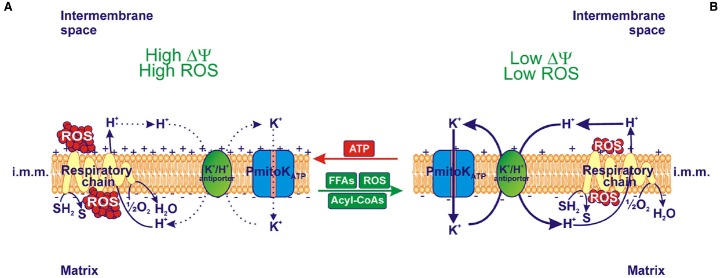FIGURE 2.
Effect of in vitro modulation of PmitoKATP on ΔΨ and reactive oxygen species (ROS) production. (A) When ATP inhibits PmitoKATP and, as a consequence, the K+ cycle due to the PmitoKATP-K+/H+ antiporter combined function, both high electrical membrane potential (ΔΨ) and high ROS production are observed. (B) On the contrary, in the presence of FFAs and their acyl-CoA derivatives, as well as of ROS, which activate PmitoKATP, K+ cycle is activated and both low ΔΨ and low ROS production are observed. In isolated DWM the degree of PmitoKATP functioning is dependent on the balance among modulators; a fully opened channel may completely collapse ΔΨ and ROS production. The reducing equivalent flux through the respiratory chain to molecular oxygen and the coupled proton ejection into the intermembrane space are also indicated; + and – signs refer to ΔΨ. The continuous or dotted arrows refer to a more or less active pathway, respectively. SH2, reduced substrates; S, oxidized substrates; i.m.m., inner mitochondrial membrane.

